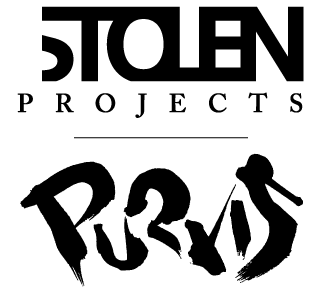Your head gets cut clean off. Not metaphorically—literally—by a masked figure flinging vinyl record guillotines like Kung Lao. It's a hard-hitting start and the grinding begins. Bomb Rush Cyberfunk isn’t just skates, tunes and graffiti. It’s cybernetic decapitation, consciousness transfer, identity amnesia, and a fight all the way to the top. All City baby! Yet, despite its cultural stylings and influences, BRCF struggles to understand what should be its core tenant, rebellion.
Bomb Rush Cyberfunk looks and sounds amazing. Its cel-shaded city, New Amsterdam, is big, bold and bright. The soundtrack is fire, an eclectic mix of Sega OG Hideki Naganuma, RESO drum and bass, 2 mello tunes and lesser known bangers worthy of a vinyl master. Lucky for me, iam8bit dropped it and I picked it up. The packaging design by Sem Graham is sharp, with a metallic finish, and the centre stickers could have been fixed by The Designers Republic back in ‘95. For good or bad, the music isn’t just for style, it’s the game’s most authentic tether to Jet Set Radio Future, the 2002 cult icon it channels through every frame.
And here’s the tension. Jet Set Radio Future was style and statement. DJ Professor K blasted a call to arms, beckoning rudies to grind against fascism with rhythm and spray. Its world throbbed with an undercurrent of resistance: youth vs control, color vs corporate corruption. It borrowed from real Tokyo street fashion, turntablism, punk, funk and graffiti then filtered it through Sega's techno-optimism. Every movement felt deliberate. Conversations popped. Everything bounced. You inhabited the world as a freedom fighter.
In contrast, playing BRCF is half waiting for something to happen. Traversing New Amsterdam is fast and smooth but you’re never really sure where you’re going, or why. Tricks signal funk and flash but they lack friction, conviction and feedback. Grinding and tricking become a way to get somewhere, not to do something. Trick combos rack up points but really it’s just to punctuate the commute and New Amsterdam exists to be passed through.
In Tony Hawk, the goal is to riff a perfect line in a tight 2 minutes. In Skate, its pulling off the near-impossible with grace and making it look like you could do it for real. In Hi-Fi Rush, the beat is your god–miss a note, lose the groove, lose the battle. And in the lesser known Australian classic, de Blob, painting is revolution. Every bounce is at once a splash of color in defiance and a flourish of bass, brass or scratch–every movement dripping with expression as freedom of self and others. Years ago, I had the privilege of interviewing de Blob’s creative director Nick Hagger who summed it up so simply, “Blob is fighting to prevent people from feeling alienated from the world they live in.”
Dion Koster, BRCF’s director, calls it a passion project, drawn from his own youth in the Netherlands—skating, breakdancing, tagging. In interviews, he’s steadfast, “If people hate it, I don’t care. I’m going to make more of it.” Rad! Let’s kick it. There’s so much room for improvement. There’s potential for a compelling experience. But this version of BRCF is drawing too heavily from another time and place. It’s a remix of a remix. Second-hand rebellion.
Bomb Rush Cyberfunk is looking backward, trying to recreate how Jet Set Radio Future felt, instead of asking what that feeling meant and what today’s (r)evolution might be. Its style is immaculate. Its soundtrack bangs.
But it's defiance is adolescent, not yet a riot.

